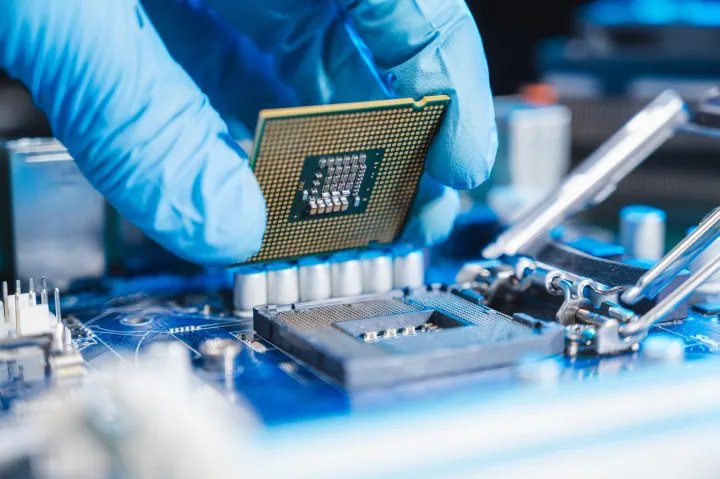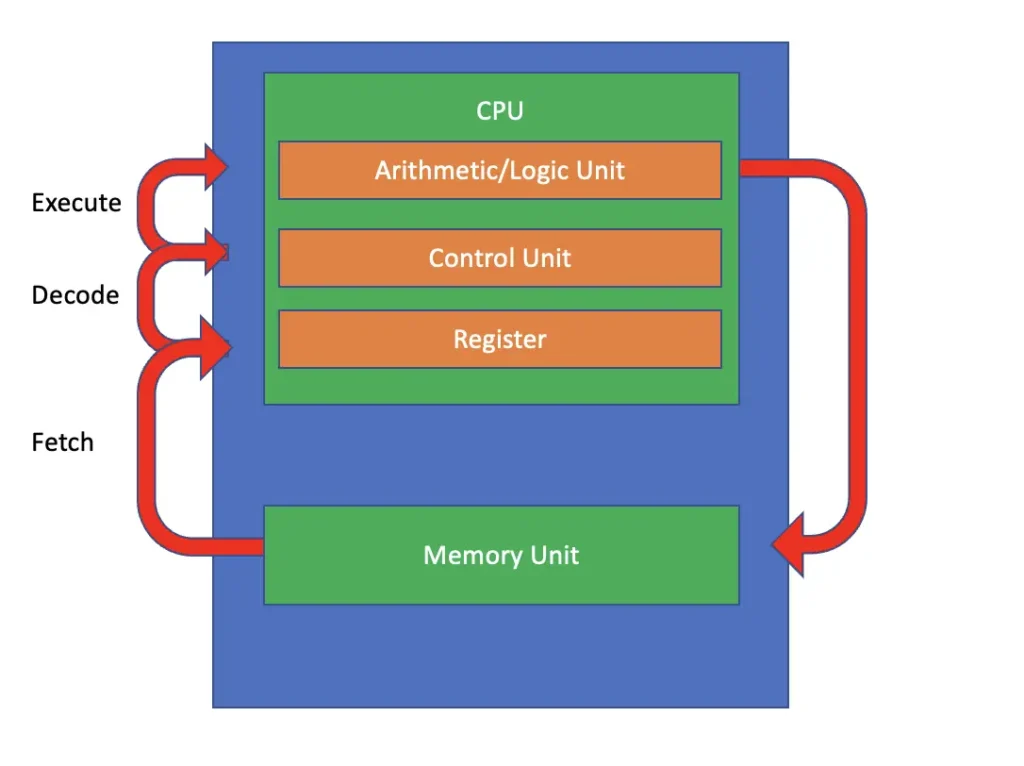CPUs, or Central Processing Units, are the heart of any computer system, responsible for executing instructions and processing data. Understanding how CPUs work is essential for anyone interested in computer technology, whether you’re a novice user or a seasoned tech enthusiast. Pchistory.net offers a wealth of information on CPU functionality, exploring its architecture, operations, and significance in modern computing.
“Pchistory.net explains CPU functionality, detailing its architecture and data processing. It serves as an educational resource for understanding how CPUs operate within computer systems.”
In this article, We will discuss “pchistory.net CPU work”
Table of Contents
What is a CPU?

The CPU, often referred to as the “brain” of the computer, carries out instructions from programs by performing basic arithmetic, logic, control, and input/output (I/O) operations. It processes data and executes commands, making it a crucial component for system performance. CPUs are found in various devices, including desktops, laptops, tablets, and even smartphones, where they perform millions of calculations per second to facilitate smooth operation.
Key Components of a CPU:
ALU (Arithmetic Logic Unit):
The ALU performs all arithmetic calculations (addition, subtraction, multiplication, division) and logical operations (comparisons and logical operations like AND, OR, NOT). It is responsible for executing basic mathematical functions and making decisions based on comparisons. The efficiency and speed of the ALU play a vital role in the overall performance of the CPU.
Control Unit (CU):
The control unit directs the operation of the processor. It tells the ALU and other components how to respond to the instructions received from the computer’s memory. The CU acts like a traffic cop, coordinating the activities of all the parts of the CPU, ensuring that instructions are processed correctly and efficiently.
Also Read: Oc Is Not Supported CPU – A Guide For Gamers And Enthusiasts!
Registers:
Registers are small storage locations within the CPU that hold data temporarily during processing. They provide the CPU with fast access to frequently used data and instructions. Different types of registers exist, including data registers (holding operands for operations), address registers (storing memory addresses), and status registers (indicating the state of the processor).
Cache Memory:
Cache memory is a smaller, faster type of volatile memory located inside or very close to the CPU. It stores copies of frequently accessed data and instructions to speed up processing times. CPUs typically have multiple levels of cache (L1, L2, and sometimes L3), with L1 being the smallest and fastest, located closest to the core. This hierarchical structure allows the CPU to quickly access data it needs, reducing the time spent fetching from slower RAM.
Bus Interfaces:
The CPU communicates with other components of the computer through buses, which are pathways for data transfer. The front-side bus (FSB) connects the CPU to the main memory, while other buses connect to peripheral devices. The speed and width of these buses impact how quickly data can be moved in and out of the CPU.
How CPUs Execute Instructions:

The process of executing instructions can be broken down into several steps, often referred to as the Fetch-Decode-Execute cycle:
Fetch:
The CPU retrieves an instruction from memory based on the program counter (PC), which keeps track of the next instruction to be executed. The instruction is loaded into the instruction register (IR).The program counter increments after each fetch, ensuring that the CPU processes instructions sequentially unless directed otherwise by control flow changes.
Decode:
The control unit decodes the fetched instruction, determining what actions are required. This step involves interpreting the binary instruction code and identifying the operations needed. During the decode phase, the control unit breaks down the instruction into its components to understand its purpose and required resources.
This may involve identifying the operands, determining the type of operation (e.g., arithmetic or logical), and preparing the ALU for execution.
Also Read: How To Measure CPU Fan Size – A Beginner’s Guide To Cooling Solutions!
Execute:
The ALU carries out the instruction, performing calculations or data manipulation as needed. Depending on the instruction, the CPU may access memory, perform arithmetic operations, or control other hardware components. Once the ALU completes the operation, it sends the results back to the registers or memory, ready for subsequent instructions or processes.
Store:
The results of the execution are then written back to memory or stored in registers for further processing. This step ensures that the outcomes of calculations are saved for future use. In some cases, the results may also trigger updates to the program counter or other control signals, influencing the flow of subsequent instructions.
This storage phase is crucial for maintaining data integrity and allowing programs to function correctly as they rely on these outcomes for further operations.
Repeat:
The CPU repeats this cycle for each instruction in a program until all tasks are completed. This rapid execution of instructions allows for the smooth functioning of software applications. As the CPU processes each instruction, it continually updates the program counter to reflect the next instruction’s address, ensuring a seamless flow of execution.
This repetitive cycle is fundamental to the CPU’s ability to handle complex tasks efficiently and allows multitasking and responsive user experiences in modern computing.
Importance of CPU Performance:
The performance of a CPU is measured in terms of its clock speed (GHz), the number of cores, and its architecture.
- Clock Speed: Higher clock speeds indicate the number of cycles a CPU can execute per second. A CPU with a higher GHz rating can perform more operations in the same timeframe, leading to faster performance.
- Cores: Modern CPUs often have multiple cores, allowing them to process multiple instructions simultaneously. This enhances multitasking capabilities and improves performance for applications designed to utilize multiple cores.
- Architecture: The design and efficiency of a CPU’s architecture can greatly influence performance. Newer architectures often include improvements in power efficiency, heat management, and processing capabilities.
Pchistory.net provides insights into how these factors influence overall system performance and efficiency. Understanding these elements helps users select the right CPU for their needs, whether for gaming, professional applications, or everyday tasks.
Evolution of CPU Technology:
CPUs have evolved significantly over the decades, from early single-core processors to today’s multi-core and multi-threaded designs. Innovations in fabrication technology have led to smaller transistors, enabling more cores and improved performance without increasing the physical size of the chip. Additionally, advancements in cooling solutions have allowed CPUs to operate at higher speeds without overheating.
FAQ’s
Here are five FAQs with short answers based on the article about how CPUs work from Pchistory.net:
1. What is a CPU?
A CPU, or Central Processing Unit, is the primary component in a computer that executes instructions and processes data, functioning as the “brain” of the system.
2. How does a CPU execute instructions?
The CPU follows the Fetch-Decode-Execute cycle, where it fetches an instruction from memory, decodes it, executes the necessary operations, and stores the results.
3. What are the key components of a CPU?
Key components include the Arithmetic Logic Unit (ALU), Control Unit (CU), registers, cache memory, and bus interfaces.
4. Why is CPU performance important?
CPU performance, measured by clock speed, core count, and architecture, affects the overall speed and efficiency of a computer system, influencing multitasking and application performance.
5. How has CPU technology evolved over time?
CPU technology has evolved from single-core processors to multi-core designs with smaller transistors, enabling higher speeds and improved performance while managing heat effectively.
Conclusion
Understanding how CPUs work is essential for maximizing computer performance and making informed hardware choices. Pchistory.net provides valuable insights into CPU architecture, operation, and evolution, highlighting the significance of key components like the ALU and cache memory. With this knowledge, users can appreciate the role of the CPU in their systems and optimize their computing experience.

